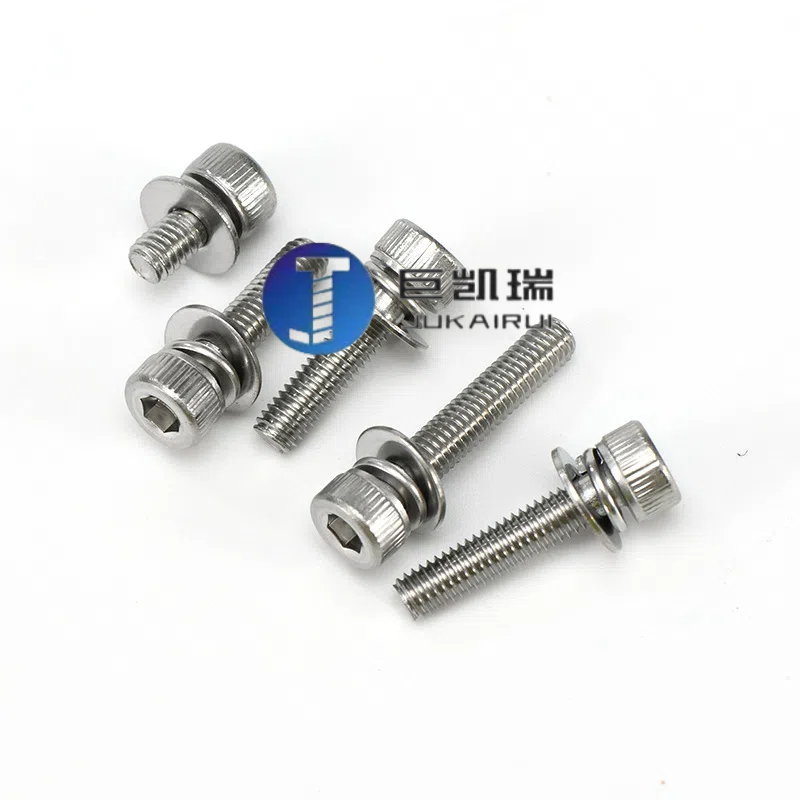Release time:2020-01-16 18:44 Browse:

The use of extension screws in high temperature environments is a complex issue involving many fields, which is not only related to the performance of the fastener itself, but also directly affects the safety and stability of the entire equipment or structure. Below, we will discuss in detail the matters that need attention when using extension screws in high temperature environment from the aspects of material selection, structural design, manufacturing process, mechanical property testing, environmental adaptability assessment, and use and maintenance.
1. Material selection
In the high temperature environment, the material choice of screws is very important. Commonly used high temperature materials include high temperature alloy steel and stainless steel. These materials are able to maintain high strength and corrosion resistance at high temperatures, which is the key to ensuring long-term stable operation of screws.
- ** High temperature alloy steel ** : combining the advantages of a variety of metal elements, with high strength, high wear resistance and good creep resistance, especially suitable for high temperature, high pressure and high stress working environment. In the selection, it is necessary to pay attention to the specific impact of its alloy composition on the properties, as well as the mechanical properties at different temperatures.
- ** Stainless steel ** : Because of its excellent corrosion resistance, it performs well in humid and corrosive environments. In high temperature environments, special attention should be paid to its high temperature resistance and tensile strength to ensure that it can still maintain stable mechanical properties at high temperatures.
Second, structural design
The structural design of lengthening screw directly affects its force distribution and service life. In high temperature environment, reasonable structural design can reduce stress concentration and improve the bearing capacity of screws.
- ** Thread design ** : including thread shape, pitch, tooth Angle, etc., need to be verified by calculation and analysis or experiment to ensure that the thread design is reasonable, and can maintain stable tightening effect and anti-loosening ability at high temperature.
- ** Rod diameter and length ** : The diameter determines the bearing capacity of the screw, and the length affects its span and stability. In a high temperature environment, the rod size should be reasonably determined according to the actual application scenario to avoid problems caused by over-design or insufficient design.
- ** Head design ** : Head shape, size and tool matching directly affect installation efficiency. In a high temperature environment, choose a tool that is easy to install and can withstand high temperatures to ensure the smooth installation process.
3. Manufacturing process
The quality of manufacturing process is directly related to the quality of lengthening screws. In the high temperature environment, strict control of the manufacturing process to ensure that the mechanical properties of the screws meet the design requirements is the basis for ensuring its stable operation.
- ** Heat treatment ** : Through quenching, tempering and other processes to improve the mechanical properties of the material, improve strength and toughness. In high temperature environments, special attention should be paid to the control of heat treatment temperature and time to avoid overheating or undercooling leading to performance degradation.
- ** Surface treatment ** : such as galvanized, nickel plating, spraying, etc., can improve the corrosion resistance and appearance quality of screws. In a high temperature environment, a high temperature resistant surface treatment process should be selected to ensure that the screw surface is not oxidized or corroded.
- ** Machining accuracy ** : including thread accuracy, rod straightness, head shape tolerance, etc. High-precision machining can ensure that screws are more smooth and stable in use, and reduce stress concentration and damage caused by processing errors.
4. Mechanical properties test
Mechanical property testing is an important means to evaluate the performance of lengthening screws. In high temperature environments, special mechanical performance tests are required to ensure the bearing capacity and safety performance of the screws.
- ** Tensile strength test ** : Through the tensile testing machine, the maximum tensile force that the screw can withstand before breaking is determined to evaluate its bearing capacity. In the high temperature environment, it is necessary to pay attention to the change of its tensile strength with temperature.
- ** Torque test ** : Through the torque wrench, determine the required torque value during installation to evaluate the installation performance and tightening effect of the screw. In a high temperature environment, special attention should be paid to the control of torque to avoid insufficient tightening or damage caused by too much or too little torque.
5. Environmental adaptability assessment
In high temperature environment, it is essential to evaluate the environmental adaptability of lengthening screws. By simulating the actual working environment, the mechanical properties and durability of the screws are tested to ensure that they can still work stably at high temperatures.
- ** High temperature test ** : Test the mechanical properties of screws in a high temperature environment to evaluate their heat resistance. Special attention is paid to the performance of key indicators such as tensile strength and yield strength at high temperatures.
- ** Corrosion test ** : In a high temperature and humid environment, corrosion tests are performed to evaluate the corrosion resistance of the screws. Special attention is paid to the corrosion resistance of the surface treatment layer and the corrosion resistance of the material.
6. Use and maintenance
When using extension screws in a high temperature environment, the following points should also be noted:
- ** Preload control ** : Reasonable control of preload is essential to extend screw life. In a high temperature environment, the preloading force should be adjusted according to the thermal expansion and cold contraction characteristics of the material to ensure the fastening effect.
- ** Lubrication and anti-rust ** : Proper lubrication can reduce friction and wear, reduce the impact of heat generated by friction on screws; Effective rust prevention measures can prevent screws from rusting in high temperature and humid environments.
- ** Regular inspection and maintenance ** : In the process of use, regular inspection and maintenance of the screws. Find and handle problems such as bending and loosening in time to ensure the normal operation and safety of the equipment.
To sum up, the use of extension screws in high temperature environments needs to pay attention to many aspects of the problem. From material selection, structural design, manufacturing process to mechanical properties testing, environmental adaptability assessment, and use and maintenance, many links need to be strictly checked to ensure the stable operation and safety performance of screws in high temperature environments. Only in this way can we provide a strong guarantee for the long-term safe operation of the equipment.
# Lengthening screws # Lengthening bolts # Lengthening outer hex screws # Lengthening inner hex screws # fasteners

